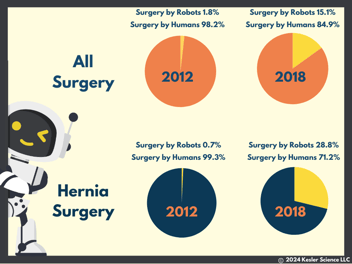Nature's Disco: The Wonder of Fireflies - Kesler Science Weekly Phenomenon and Graph
Have you experienced synchronized fireflies? It's so surreal. Thousands of tiny lights blinking in perfect harmony, illuminating the night like nature’s very own disco. I've got some great info about the science behind this phenomenon, the best places to view it, and some fascinating facts about these enchanting creatures.
Why Do Fireflies Flash?
Fireflies, also known as lightning bugs (depending on where you live), are actually beetles from the family Lampyridae. Their bioluminescence, the light they emit, is produced through a chemical reaction involving luciferin, luciferase, ATP, and oxygen in their lower abdomen. This flashing isn’t just for show—it plays a crucial role in their mating rituals. Males flash specific patterns to attract females, who respond with their own flashes if interested.
The Science of Synchronization
Synchronized flashing, though rare, occurs in only a few firefly species. The exact reason behind this synchronization is still a subject of research, but scientists believe it’s a mix of environmental cues and social behavior. One theory suggests that flashing in unison makes it easier for females to spot males in dense populations, increasing the chances of successful mating. Think of it as the firefly version of a well-choreographed dance number to impress a date!
Best Places to Witness Synchronized Fireflies
1. Great Smoky Mountains, Tennessee
The Great Smoky Mountains are perhaps the most renowned spot in the United States for witnessing synchronized fireflies. Every year, from late May to early June, visitors flock to Elkmont to see the Photinus carolinus species create a stunning light show. Just imagine thousands of tiny lights putting on a performance better than any fireworks display!
2. Congaree National Park, South Carolina
Congaree National Park offers another spectacular viewing opportunity. The fireflies here, primarily Photuris frontalis, synchronize their flashes in a mesmerizing display that usually occurs from mid-May to mid-June. If you’re planning a visit, just remember to bring your bug spray—those fireflies might be enchanting, but the mosquitoes are relentless!
3. Allegheny National Forest, Pennsylvania
In the Allegheny National Forest, you can experience the unique display of synchronous fireflies. The Pennsylvania Firefly Festival, held annually in late June, celebrates this natural wonder with educational activities and viewing events. It’s like a rave in the forest, but with fewer glow sticks and more natural wonder.
4. Southeast Asia
For those willing to really travel, several locations in Southeast Asia, such as Malaysia and Thailand, are famous for their synchronized firefly displays. Here, different species like Pteroptyx tener create a beautiful, rhythmic light show along riverbanks and mangroves.
Threats to Firefly Populations
Despite their magical displays, fireflies are facing significant threats. Habitat loss due to urbanization, pollution, and deforestation is a major concern. Light pollution from cities and streetlights disrupts their natural flashing patterns, making it harder for them to find mates. Pesticides and chemical pollution can also harm firefly larvae, which develop in soil and leaf litter.
Climate change also poses threat as it alters habitats and affects the availability of food and suitable breeding grounds. The combination of these factors has led to declining firefly populations worldwide, making conservation efforts more critical than ever.
Scientists are starting to study populations now to get a baseline as they decline. One thing they've discovered - when it comes to spotting fireflies, there are definitely certain times that are better than others. Check out this graph:

This graph is interesting to me for the way it displays the time and percentage of likelihood that you'll see a firefly. If I shared this graph with my students, I might use the following questions to get them thinking deeper:
💡 The percentage of likelihood has been written as decimals. What would they be written as percents? What do you notice about where the scale starts and ends? How would this graph look if the scale was from 0 - 100%?
💡 Look at the way the times are displayed. If sunset on the first day of the experiment happened at 5 pm, what time was the first measurement taken? What time was the best time to see fireflies that day?
💡 This graph represents the averages of an entire month of observing fireflies. Think about the way that the length of daylight in each day changes throughout a month. Why did the researchers use "minutes from sunset" instead of listing certain hours?
💡 Fireflies can only be seen as it gets dark, and they stop flashing with a few hours of sunset. How would this graph be different if it displayed a whole day?
Some Additional Facts and Resources!
Species Diversity: There are over 2,000 species of fireflies worldwide, but only a handful exhibit synchronized flashing. Just imagine how many tiny, glowing dancers are out there!
Life Cycle: Fireflies undergo complete metamorphosis, including egg, larva, pupa, and adult stages. They spend most of their life cycle in the larval stage, typically underground or in leaf litter, where they feast on small insects, snails, and worms. Interestingly, adult fireflies don’t eat. Their primary focus is mating. Once they’ve found a mate and laid their eggs, their life cycle comes to an end, and they die shortly thereafter. It’s a brief but dazzling finale!
Ecological Importance: Fireflies are important indicators of healthy ecosystems. Their presence can signal a well-balanced environment, making them a crucial part of biodiversity studies.
Educational Resources
- Videos and Documentaries: Check out visual resources like "The Science of Fireflies" by PBS Nature to get a closer look at these fascinating creatures.
- Books: "Silent Sparks: The Wondrous World of Fireflies" by Sara Lewis provides an in-depth look at firefly biology and behavior.
- Citizen Science Projects: Participate in Firefly Watch, a project where you can contribute to scientific research by observing firefly populations in your local areas. Who knew watching fireflies could be both fun and scientifically valuable?
I hope you and your class have an "illuminating" conversation about this one! 😉
- Chris



